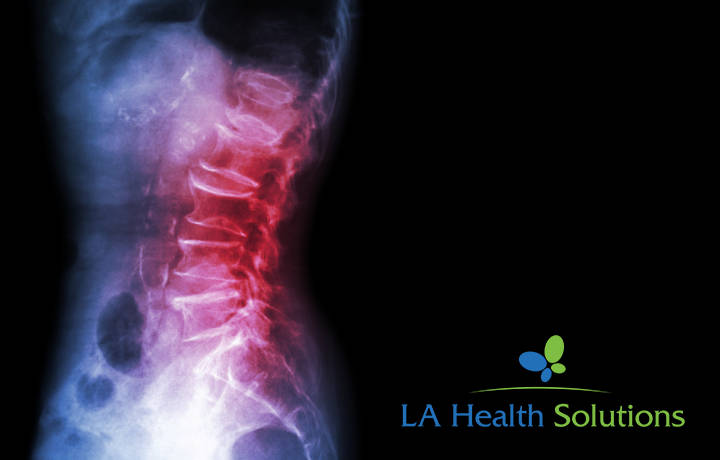What Is Spondylolisthesis?
The word Spondylolisthesis comes from the Greek word spondylos, which means “spine” or “vertebra,” and listheses, which means “slipping, sliding or movement.” Spondylolisthesis is the result of one or more of the vertebrae in the spinal column slipping out of alignment onto the vertebrae below it. Congenital Joint Defect, joint(s) damaged by trauma, stress fractures, or joint damage due to an infection or arthritis are all common problems that can allow the bones to slip over each other. This condition occurs in about 4 to 6 percent of the adult population; however, it is still possible to have it and not experience any symptoms. If the vertebrae only shift slightly, symptoms may not develop for years, if at all. If the vertebrae slips too far, a spinal nerve can be compressed causing low back pain and numbness or weakness in one or both legs. It can also cause pain in the back or buttock, and it can even cause the muscles in the legs to feel weak or tight. In rare cases, bladder or bowel control can also be impacted.Spondylolisthesis Causes & Symptoms
Spondylolisthesis is caused when one or more of the facet joints become degenerative, weak or fractured which allows the vertebrae to slip or move. The main causes include the following: an arthritic facet joint or an infection, a facet joint is damaged by trauma or an accident, defective facet joint since birth (congenital), or a stress fracture from overuse of the facet joint. High impact sports like gymnastics, football or even weightlifting can impact the joints which may cause stress fractures in the vertebrae. Spondylolisthesis can also be caused by the weakening of ligaments that connect the vertebrae due to age and allows for slippage. Spondylolisthesis are graded according to how much one vertebra slips compared to the adjacent vertebra: Grade I – Less than 25 percent Grade II – Between 25 and 50 percent Grade III – Between 50 and 75 percent Grade IV – More than 75 percent Grade V – Spondyloptosis occurs when the vertebra has completely fallen off the next vertebra. The most common symptoms of Spondylolisthesis include:- Walking difficulty
- Numbness or weakness in one or both legs
- Pain traveling from the low back down on or both legs
- Loss of bowel or bladder control
- Back or buttock pain, that gets worse with bending over or twisting
Spondylolisthesis Treatments
Non-operative treatment plans begin with the reduction or discontinuing of any physical activity that may have caused the condition to occur. However, physical therapy will be an important part of the Spondylolisthesis treatment to strengthen the core abdominal and low back muscles to provide stability and reduce further damage. Anti-inflammatory medicines such as ibuprofen (Advil) or naproxen (Aleve) are prescribed in order to reduce inflammation and pain. Weight may also be a factor and weight loss may also be part of the treatment plan. Non-operative Spondylolisthesis treatments include:- Medications: anti-inflammatories, muscle relaxers and on rare occasions narcotic medications
- Alternating heat/cold therapy during the first 24-48 hours
- Physical therapy Exercises: including stretching, massage, and strengthening
- Epidural steroid injections are used two-fold, first, to relieve inflammation of the affected spinal nerve and secondly, diagnostically to confirm the correct affected level at which the pain originates from.

At LA Health Solutions, we pride ourselves on our multi-disciplinary facility that offers a variety of comprehensive services including interventional pain management, physical therapy and chiropractic work. Many problems that we see in our patients can be treated with the right mix of non-surgical approaches, you do not have to have surgery first to see results. Call us today and schedule an appointment 844-496-LAHS (5247).

